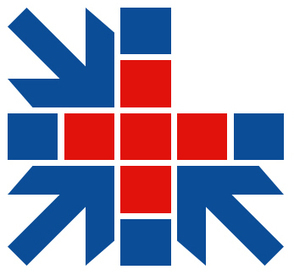The growth in business cases for new models of healthcare delivery and integration of digital health technology is reaching the point of convergence — creating powerful synergies where there was once only data silos and skepticism.
We have not quite achieved this synergy yet, but opportunities emerging in 2015 will move the industry much closer to the long-awaited initiatives in connected, value-based care.
Individuals are constantly hyper-connected to a variety of technology networks and devices. Wearables will continue to enter the market, but their features and focus will go well beyond fitness. Even the devices entering the market now are more sophisticated than ever before. Some are now equipped with tools like muscle activity tracking, EEG, breath monitoring, and UV light measurement.
It will be fascinating to watch how consumer electronics, wearables, and clinical devices continue to merge and take new forms. Some particularly interesting examples will be in the categories of digital tattoos, implantable devices, and smart lenses.
As the adoption of wearables continues to grow, we will continue to see more value placed on accessing digital health data by healthcare and wellness organizations. This will be especially important as healthcare shifts towards value-based models of care. The need to gain access to the actionable data on connected devices will only grow as innovation creates more complex technologies in the market.
This is the year the promise of telehealth will be realized. It is projected that by 2018, 65 percent of interactions with health organizations will take place via mobile devices. Those statistics speak to the need of satisfying the growing demands being placed on providers, along with the growing discernment among patients when it comes to selecting affordable and convenient medical services. The continued adoption of telehealth will extend the point of care for providers and provide ubiquitous access to medical professionals for patients.
A number of entities are already putting this into practice: Walgreens, in partnership with MDLIVE, recently expanded their mobile platform to offer virtual doctors visits for acutely-ill patients; Google is testing a HIPAA-compliant medicine platform for video chats with doctors; and, digital urgent care solutions, like Doctor on Demand, are growing in popularity due to their convenience and low cost.
Telemedicine will not only extend the point of care, but will also be critical in better combatting chronic disease. Managing chronic health conditions will become the focus of many healthcare providers, as models of reimbursement and population health management (PHM) continue to replace fee-for-service models. One issue with chronic disease management is that it is difficult to monitor at-risk patients outside of the hospital. This is where telemedicine comes in.
Prescribed devices and applications to better handle chronic conditions will increase in pervasiveness. This idea of prescribing mobile health to better manage disease states translates to a host of chronic conditions – obesity, diabetes, heart disease, arthritis, cancer.
For example, our client UCSF uses devices like step trackers, sleep trackers, scales and blood pressure monitors to track patients at-risk for heart disease or cardiac readmissions. Another client, UNC is creating a Gastro-Intestinal tracking application (GI Buddy) that leverages fitness devices and scales to monitor Chron’s disease. There are thousands of studies pioneering innovations to improve the efficiency and effectiveness of healthcare. And, they are making serious strides.
The automatic transmission of pertinent patient data from these mobile health technologies is propelling forward capabilities for cost-effective, efficient and successful remote patient monitoring, population management and patient engagement programs.
However, as telehealth and telemedicine capabilities continue to develop, the major hurdle for most providers is integrating and the mobile health data collected outside of the hospital back into the clinical story for use in the provision of care. In a value-based healthcare system, the key to better outcomes lies in data, and specifically, obtaining access to data generated outside of the provider setting.
Platform services will continue to be vital partnerships as healthcare systems are expected to quickly execute on all these initiatives simultaneously and successfully. Bottom line: The industry is transforming, and if you have not started talking about how to connect to those external data sources, then you need to start.
These emerging trends will continue to bind the landscapes of technology, healthcare, and business. The road set upon long ago by medical professionals and legislators is finally coming to fruition. The walls of interoperability are beginning to come down, investments are growing, partnerships are forming, and consumers are starting to take notice. We are moving towards a digital health revolution. We have the opportunity, the responsibility, and the honor, to align healthcare and technology innovation to exponentially improve our care system. It is a tall task, but we are off to a promising start.
 Your new post is loading...
Your new post is loading...
 Your new post is loading...
Your new post is loading...















